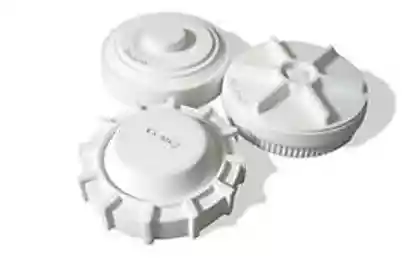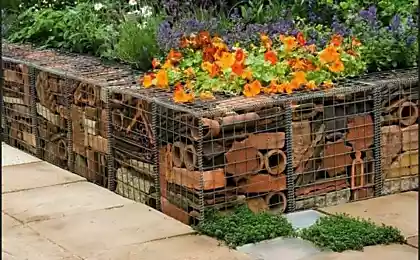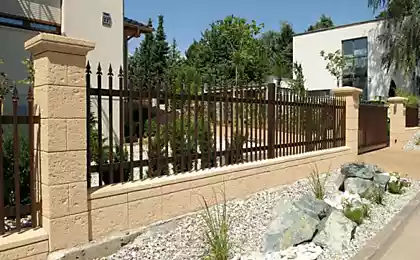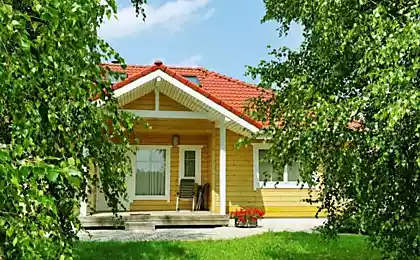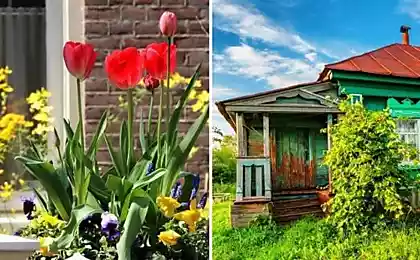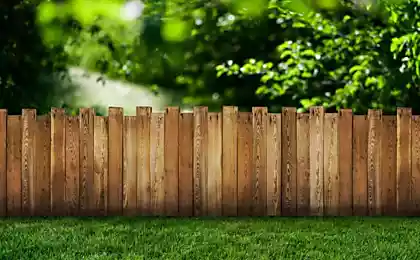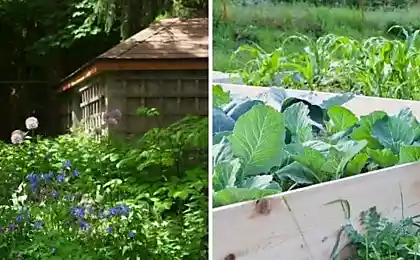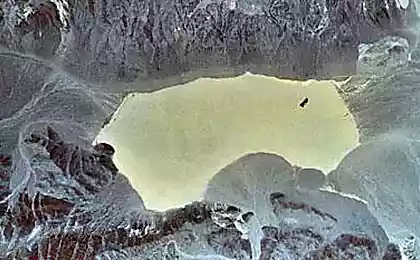177
Dreamed of a fence of gabions, the husband did it himself for the first time, saving a tidy sum
In the proposed article, we will tell you what gabions are, what they have earned popularity among private developers, how to build a fence from gabions and what other structures can be created from them on your site.
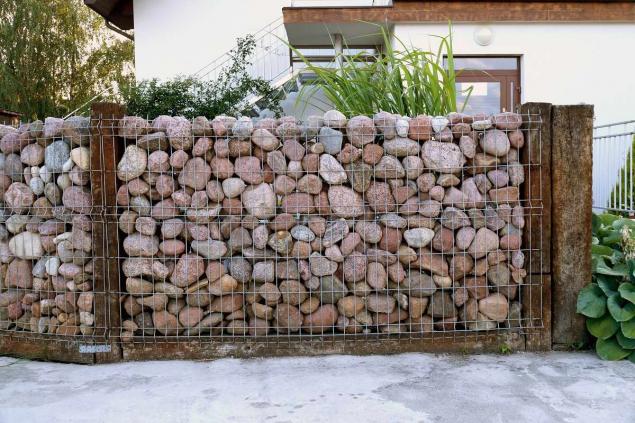
The word "gabion" is French and comes from the Italian gabbione - a large cage. The first gabions were used at the turn of the XV and XVI centuries to protect soldiers from artillery fire.
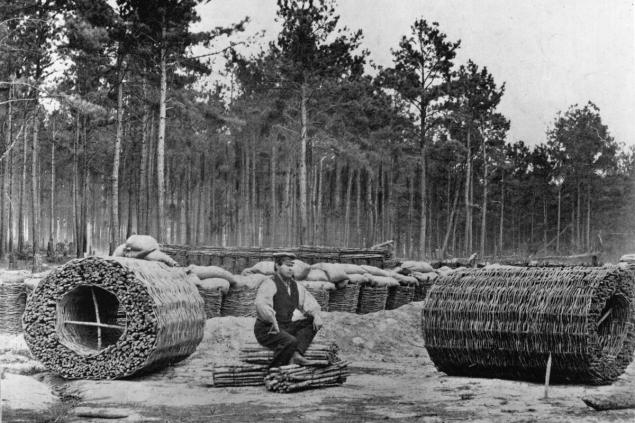
GettyImages looked like woven baskets with no bottom, which were delivered to the front line empty, and already on the spot filled with sand, earth or stones.
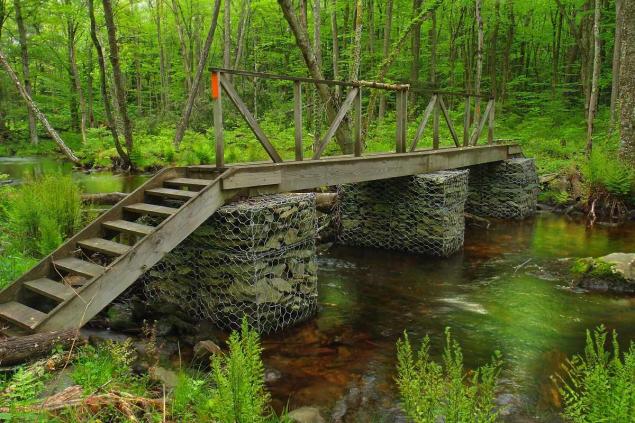
With the light hand of Leonardo da Vinci, gabions have found application in civil construction as an option for strengthening walls, bridge supports and steep slopes along roads. In the 20th century, containers of metal mesh came to replace baskets, but the essence of this has not changed.
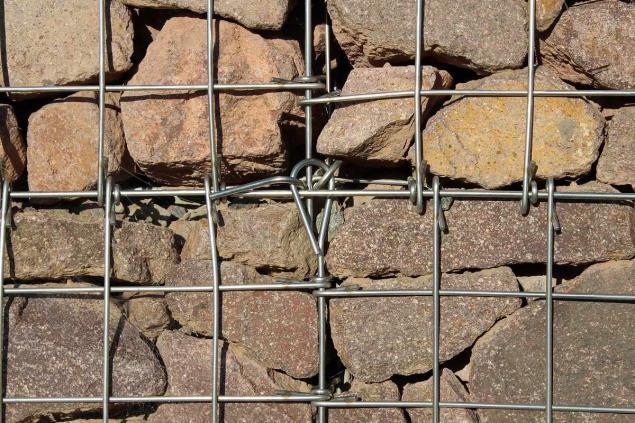
The prefabricated metal structure is filled with stones, which should be 1.5-2 times the diameter of the grid cells. This size, on the one hand, prevents stones from falling out of the gabion. It does not leave too much space between them.
The shape of gabions are boxed, cylindrical, mattress-tuff. There are also two main types of shells for gabions: wicker mesh wire and welded mesh boxes of steel bars.
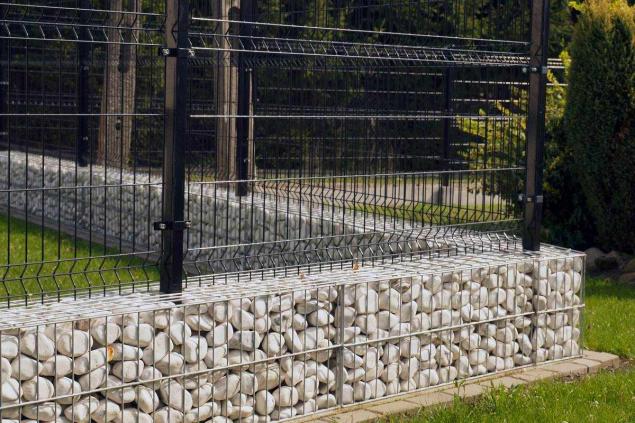
The gabion fence has many advantages. First of all, you don’t need a foundation, a structure, and it’s already very solid on the ground. Moreover, the strength of gabions even increases with time, as the cavities are filled with soil and grass grows in them. And flexibility allows them to withstand shrinkage and swelling of the soil without breaking.
Secondly, simplicity and environmental friendliness. Installation can be carried out alone without complex equipment and the involvement of specialists. No cement, just mesh and natural stone. If necessary, the structure can be disassembled and moved to another place.
View this post on Instagram
A post shared by @gabion_art_project
Thirdly, gabions are undemanding to the landscape, fit well into any landscape. They can be covered with soil and green spaces. Such fences do not need to be taken care of at all, and in terms of durability they approach stone buildings and can much outlive their owners.
How to install a fence of gabions? Large gabion stones look attractive, but the price can bite. Therefore, in wide fences, only external walls can be laid out from them, and the inner part can be filled with small rubble. In this case, it will be necessary to dug the frame of the structure into the soil by 20-30 centimeters.
View this post on Instagram
A post shared by Georgi Shchukin (@georg_vlg_1987)
First of all, pull the cord along the fence line, remove the upper layer of soil along it. If necessary, dig a trench of the appropriate size. Its bottom can be lined with geotextile to prevent weeds from sprouting.
View this post on Instagram
A post shared by Sergey Barabashov (@hend_made_ruchnaya)
Buy a wire mesh or ready-made welded mesh panels of wire with zinc or polymer coating. The size of the cells should be chosen based on the fraction of the stone that will be used to fill. In addition to the side, end walls and covers, you will need strengthening P-shaped screeds. All elements of the design are connected by a wire twist.
about:blank
The gabion should be filled in layers. After filling, the block can no longer be moved, so pre-position it in the place where it will stand. Fill the net to the middle of the height, strengthen it with jumpers. More details about the process of assembly of the gabion can be found in the attached video.
How else can gabions be used on the site? Previously edited "Site" I made a selection of ideas on how to decorate the site with the help of gabion structures.
View this post on Instagram
A post shared by Krasnodar Manor (@usadba123_krd)
Mangalas, benches, pots for plants, decorative ponds and walls, arbors, foundations for wooden fences, flower beds and even sculptures... Not to mention, and probably not required. After all, this list is endless, as is the flight of your imagination.

The word "gabion" is French and comes from the Italian gabbione - a large cage. The first gabions were used at the turn of the XV and XVI centuries to protect soldiers from artillery fire.

GettyImages looked like woven baskets with no bottom, which were delivered to the front line empty, and already on the spot filled with sand, earth or stones.

With the light hand of Leonardo da Vinci, gabions have found application in civil construction as an option for strengthening walls, bridge supports and steep slopes along roads. In the 20th century, containers of metal mesh came to replace baskets, but the essence of this has not changed.

The prefabricated metal structure is filled with stones, which should be 1.5-2 times the diameter of the grid cells. This size, on the one hand, prevents stones from falling out of the gabion. It does not leave too much space between them.
The shape of gabions are boxed, cylindrical, mattress-tuff. There are also two main types of shells for gabions: wicker mesh wire and welded mesh boxes of steel bars.

The gabion fence has many advantages. First of all, you don’t need a foundation, a structure, and it’s already very solid on the ground. Moreover, the strength of gabions even increases with time, as the cavities are filled with soil and grass grows in them. And flexibility allows them to withstand shrinkage and swelling of the soil without breaking.
Secondly, simplicity and environmental friendliness. Installation can be carried out alone without complex equipment and the involvement of specialists. No cement, just mesh and natural stone. If necessary, the structure can be disassembled and moved to another place.
View this post on Instagram
A post shared by @gabion_art_project
Thirdly, gabions are undemanding to the landscape, fit well into any landscape. They can be covered with soil and green spaces. Such fences do not need to be taken care of at all, and in terms of durability they approach stone buildings and can much outlive their owners.
How to install a fence of gabions? Large gabion stones look attractive, but the price can bite. Therefore, in wide fences, only external walls can be laid out from them, and the inner part can be filled with small rubble. In this case, it will be necessary to dug the frame of the structure into the soil by 20-30 centimeters.
View this post on Instagram
A post shared by Georgi Shchukin (@georg_vlg_1987)
First of all, pull the cord along the fence line, remove the upper layer of soil along it. If necessary, dig a trench of the appropriate size. Its bottom can be lined with geotextile to prevent weeds from sprouting.
View this post on Instagram
A post shared by Sergey Barabashov (@hend_made_ruchnaya)
Buy a wire mesh or ready-made welded mesh panels of wire with zinc or polymer coating. The size of the cells should be chosen based on the fraction of the stone that will be used to fill. In addition to the side, end walls and covers, you will need strengthening P-shaped screeds. All elements of the design are connected by a wire twist.
about:blank
The gabion should be filled in layers. After filling, the block can no longer be moved, so pre-position it in the place where it will stand. Fill the net to the middle of the height, strengthen it with jumpers. More details about the process of assembly of the gabion can be found in the attached video.
How else can gabions be used on the site? Previously edited "Site" I made a selection of ideas on how to decorate the site with the help of gabion structures.
View this post on Instagram
A post shared by Krasnodar Manor (@usadba123_krd)
Mangalas, benches, pots for plants, decorative ponds and walls, arbors, foundations for wooden fences, flower beds and even sculptures... Not to mention, and probably not required. After all, this list is endless, as is the flight of your imagination.
How to Recognize a Fake Friend Who Is Mentally Cursing You
Why a son should forgive his mother for his rash words

